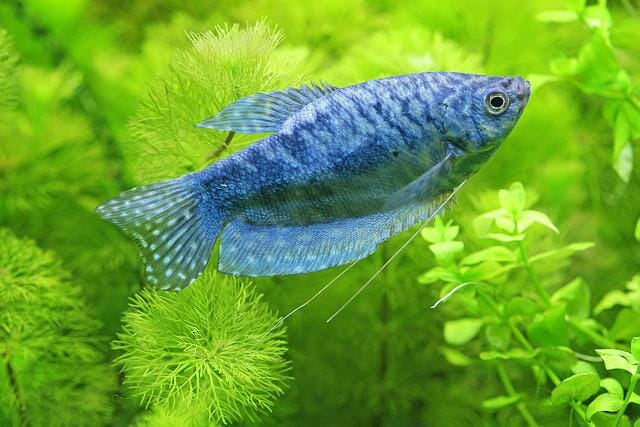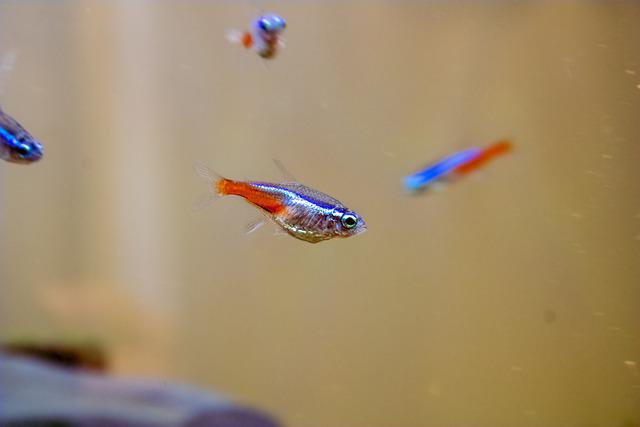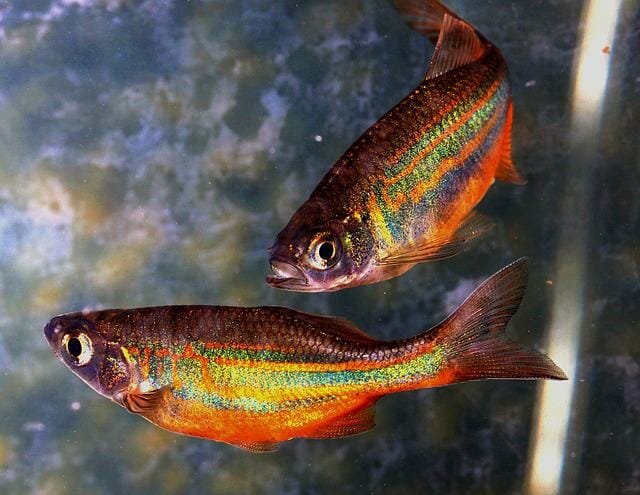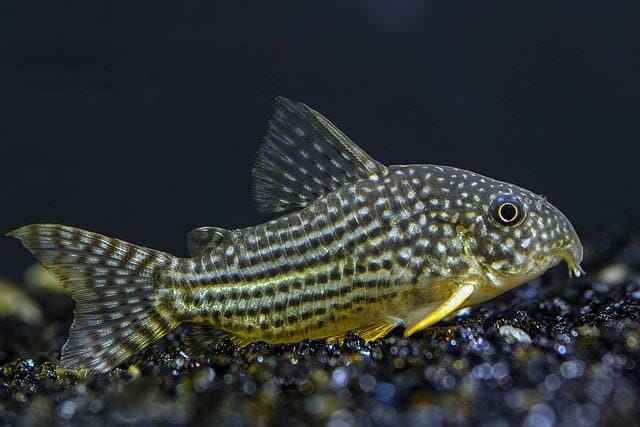Dwarf Gourami and Neon Tetras: Are They Compatible?

Dwarf gouramis and neon tetras make an ideal tank pair. They both enjoy a good environment with plenty of plants, rocks, and caves to explore. In addition, both fish are easy to care for and will thrive in a well-maintained aquarium.
Dwarf gourami prefers water temperatures around 72-82 degrees Fahrenheit, while neon tetras enjoy cooler water temperatures around 72-76 degrees Fahrenheit.
Table of Contents
The Special Needs of Dwarf Gouramis and Neon Tetras
Both fish are easy to care for and will thrive in a well-maintained aquarium. However, dwarf gouramis do require some extra attention when it comes to their diet. They feed on small insects and other food items, so they will need a variety of live foods to enjoy.
Neon tetras are also relatively low maintenance but may require occasional water changes if the tank is densely populated with algae or plants. Additionally, both fish love to swim and should have plenty of space to do so.
How Can I Tell if My Dwarf Gourami Is Getting Along With Neon Tetras?
The best way to tell if your dwarf gourami is getting along with neon tetras in its aquarium is to monitor the fish’s behavior. If there are any conflicts, you may need to move some of the fish around or add another fish to the aquarium to help the gourami get along.
Additionally, you can add some live food to the tank to facilitate interactions between the fish.
What Makes Dwarf Gouramis and Neon Tetras Ideal Tank Mates?
Regarding tank mates, the dwarf gourami and neon tetras are a great choice. They are both peaceful fish that can be kept together in a tank. Both species prefer a similar water condition and should not be mixed with other types of fish.
As for diet, give them small pieces of algae, flake food, or live foods twice a day. Make sure to provide them with plenty of hiding places to feel secure and avoid confrontation. In addition, both fish need a good amount of hiding spots.
What Makes Dwarf Gouramis and Neon Tetras Bad Tank Mates?
While dwarf gourami and neon tetras make an excellent tank pair, some fish should not be kept with. These include established fishes, aggressive fish, and fish with giant mouths. So, it is essential to do your research before adding any fish to your tank.
Additionally, dwarf gourami and neon tetras do not like to be kept in dense colonies, so they should have plenty of room to swim around.
Best Tank Mates for Dwarf Gouramis
Some of the best tank mates for dwarf gouramis include other peaceful fish, such as neon tetras or guppies. They should also have plenty of hiding places and live foods to eat.
Neon Tetra
The neon tetra is a peaceful fish that gets along well with other similar-sized fish and will not cause any harm to them. Like the dwarf gourami, the neon tetra is also a calm fish and can be housed with other non-aggressive species of fish in your tank without any issues.
The dwarf gourami and neon tetra are considered medium feeders, which means they will eat small invertebrates regularly, making sure they don’t compete for food as this could lead to conflict or even injury on either side.

Cardinal Tetra
Another excellent fish for a dwarf gourami tank is the cardinal tetra. These little guys are active fish who swim around and explore their surroundings. They get along well with other species of fish but should be kept in groups of four or more as they can become territorial if they are not watched closely.
In addition, the cardinal tetra is a good algae eater, which means the dwarf gourami will have plenty of food to choose from.
Mollies
Dwarf gouramis can also be kept with mollies, as they are peaceful fish that enjoy a comfortable lifestyle in captivity. Mollies will eat small invertebrates but should not be overfed as this could lead to obesity and health problems.
In addition, dwarf gouramis should be kept in a tank with ample hiding places as they are shy fish and may become stressed if they feel threatened.
Chili Rasboras
Dwarf gourami and neon tetras are good tankmates for chili rasboras because they share similar water needs and interests. However, ensure their tank is large enough to accommodate both of them.
They shouldn’t be kept with larger fish as these may bully or take advantage of the smaller ones. As long as you’re aware of these things and provide your raspberries with adequate space, everything should be just fine.
Zebra Danios
Zebra danios are exciting to fish that can be a great addition to any tank. They are browsers, meaning they eat a lot of plant food. This means you will need to provide enough for them. As with most fish, they like group living and will create pecking orders amongst themselves.
Be careful with other fish as they can get aggressive if they feel threatened. Zebra danios also require different water levels in their tanks – ensure you have the right one for them before getting them home!

Harlequin Rasboras
Harlequin rasboras also make a great addition to any tank. They are bottom feeders, so you will need to provide them with plenty of plant food and meaty items. Like most fish, they like group living and should not be kept alone.
Again, other fish can get aggressive if they feel threatened, and care must be taken when adding these risers to your tank. In addition, they require slightly more water than most fish, so ensure you have the right tank size before buying them.
Otoclinus Catfish
Otoclinus catfish would be a good choice. While they prefer slower-moving tanks, these cats are active and will make a great addition. They like to play and should not be kept alone as they may become territorial.
Again, provide plenty of plant food in their diet, so they don’t get bored or stressed out in their new home. Make sure their tank is large enough. In addition, they do require a significant amount of water, so be sure to have the right tank size on hand.
Corydoras Catfish
Corydoras catfish make a great addition to any tank and can be kept with dwarf gourami, depending on their size. While dwarf gourami prefers slower-moving tanks, these cats are pretty active and will make great companions for each other.
Provide both fish with plenty of plant food; they will also enjoy some meaty items periodically. Make sure your tank is large enough for both of them.
